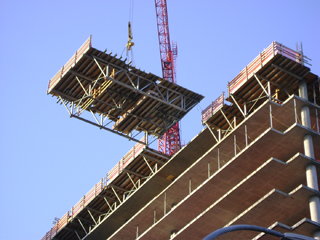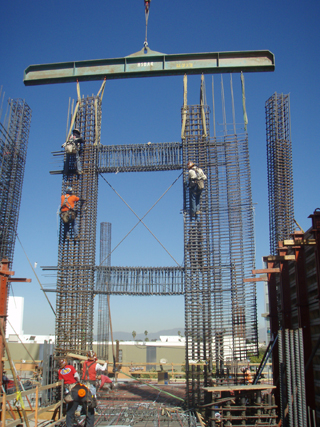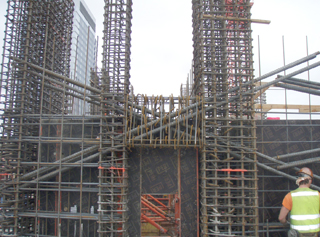|
Subscribe / Renew |
|
|
Contact Us |
|
| ► Subscribe to our Free Weekly Newsletter | |
| home | Welcome, sign in or click here to subscribe. | login |
Architecture & Engineering
| |
 |
October 28, 2010
Creating successful projects in a difficult market
Cary Kopczynski & Co.

Kopczynski
|
Today’s construction market is challenging. Just a few short years ago, banks were generous, developers were bullish, and design offices and contractors were booked solid. Successful projects could be created even if their construction costs were higher than optimum.
Today, the “new normal” has changed that. If projects are to proceed, they must be cost competitive.
Opportunities to reduce construction costs without compromising scope or quality can often be found. To maximize the chances of moving a project forward, architects, engineers and builders should seek them out. Consider the following proven strategies:
Solicit preconstruction input
An effective design team will seek the assistance of knowledgeable contractors, particularly during early design phases when decisions with the greatest cost impact are made. For example, the relative price of structural framing systems changes with time, and a contractor experienced with different systems can provide helpful input. Once the system is selected, detailing it for buildability and construction efficiency can enhance savings.
Again, input from experienced builders is useful, including from jobsite foremen and field personnel who often have excellent suggestions for simplifying construction details.
Design for buildability
The creation of a buildable design starts with architects and engineers who have a working understanding of the jobsite. Costs can escalate quickly when designers lack basic construction knowledge and, because of that, make design decisions that unnecessarily increase cost. When designers understand the cost difference between the materials, systems and details they are choosing from, they are better able to create economical designs.
The goal is not to cut scope or quality. Instead, the objective is to achieve the desired scope and quality less expensively.
In the field of concrete structures, one of the best strategies for reducing cost and improving buildability is to maximize formwork labor productivity. Forming costs are typically over 90 percent labor and can represent as much as 40 percent of the entire structural frame cost. Accordingly, developing a structural layout compatible with modern, high-production forming systems can significantly reduce the structural frame cost, while simultaneously accelerating the schedule, simplifying construction, and reducing the likelihood of costly field errors.
Finish what you start
It is not uncommon for projects to begin construction with drawings that are incomplete, sometimes seriously so. This results in confusion, finger pointing, excessive “requests for information” and escalated construction costs. Also, contractors often protect themselves with higher contingencies when pricing a project from inadequate drawings. Hence, one of the best ways for designers to control construction costs is to finish their drawings!
The design team should ideally complete all documents before issuing them for final pricing, and certainly before issuing them for construction.
Capitalize on new research
Traditional ways of construction are not always the most efficient or economical ways. Now, when the market is still recovering, is an excellent time to look beyond tradition and investigate new ideas. For example, CKC has been working with researchers at the University of Michigan to develop design methods for the use of steel fiber reinforced concrete in shear walls.
In sufficient quantities, small steel fibers mixed integrally with the concrete allow significant reinforcing bar reductions at locations of congestion, including link beams. This greatly improves shear wall buildability and reduces cost. As the market recovers, CKC is incorporating the method into the design of several projects that will benefit from its use.
High-strength reinforcing steel is another strategy for improving structural economy. CKC recently collaborated with a major steel company to develop a 90 ksi reinforcing bar for use as seismic confinement in shear walls and columns. We used it in several recent projects, with a resulting improvement in buildability and reduction in cost.
Higher quality and better economy often come from embracing new research. Find it and capitalize on it.
Stay mentally connected
Prior to the closing years of the last century, architects and engineers plied their trade with little more than paper, pencil, and the skill and imagination they brought to the table. The lack of sophisticated design tools required that they perform calculations, prepare sketches, and solve complex problems manually. This demanded a continual mental connection to the work. Contemporary computer software, on the other hand, can disconnect your mind from the problem you’re solving.
Blind faith in computer output, without the operator’s good judgment, can lead to poor design and higher costs. It is important, therefore, that architects and engineers remember that for all its speed and power, the effective use of modern technology still requires the imagination, skill, and synthesizing ability of the human mind.
Don’t let your computer shut down your thinking. Keep your head in the game.
Today’s marketplace is not as forgiving as it was a few short years ago. By ensuring that jobs are carefully planned and designed, however, cost-effective and successful projects can still result.
Cary Kopczynski, PE, SE, FACI, is president and CEO of Cary Kopczynski & Co., a Bellevue-based firm providing structural engineering for major projects throughout the United States and beyond.
Other Stories:
- Buck the recession with strategies for success
- Architectural viability can enhance mixed-use projects
- Play ‘matchmaker’ with your staff to get work
- What your HVAC techs aren’t telling you
- What the U.S. and China can learn from one another
- Using technology as a springboard to new work
- Why A/E firms should care about social media
- Data center design focuses on five fundamentals
- What PGE learned while removing Marmot Dam
- Have you secured your firm's value?
- Swedish’s Issaquah project taps into energy rebates





